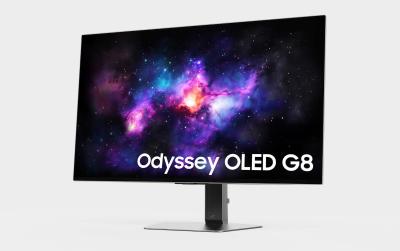OLED Smartphones - introduction and industry news
What is an OLED display?
An OLED display uses a new technology called OLED (Organic Light Emitting Diodes). OLED screens are brighter, more efficient, thinner and feature better refresh rates and contrast than LCD or Plasma.
OLEDs are made by placing thin films of organic (carbon based) materials between two conductors. When an electrical current is applied, a bright light is emitted. Since the OLED materials emit light, a backlight is not required (unlike LCDs).
OLEDs in mobile phones
Mobile phones that boast OLED screens are rapidly becoming more prevalent, with over 500 million AMOLED screens annually - mostly to satisfy demand from mobile phones. Samsung has been using AMOLEDs in its high-end phones for many years, and most phone makers are also adopting OLED displays (including Apple, LG, Xiaomi, Huawei, Oppo, Vivo, Lenovo, Motorola, and others).
OLED displays are advancing quickly, and today smartphone AMOLED displays outperform LCDs in all parameters - except the price which is still at a premium.
For a complete list of smartphones and mobile phones with OLED displays, click here.
Further reading
UBI Research: foldable OLED smartphone panel shipments reached 9.9 million in Q2 2024
UBI Research says that shipments of foldable OLED smartphone panels more than doubled in Q2 2024 (compared to the first quarter), reaching 9.94 million units. Foldable OLED smartphone panels accounted for 5.2% of the total OLED smartphone display market.
UBI expects foldable OLED panel shipments to continue growing in the second half of 2024, and sees total 2024 shipments exceeding 40 million. By 2028, the company expects foldable OLED panels to reach an almost 10% out of the entire OLED smartphone market.
DSCC: OLED panel shipments jumps 50% in Q2 2024
According to DSCC, OLED panel shipments increased 50% in the second quarter of 2024, compared to the second quarter of 2023. Compared to the previous quarter, shipments increased 13%.
DSCC says that OLED tablet shipments increased 356% in the quarter compared to last year (led by Apple's adoption of AMOLEDs in its iPad Pro devices). OLED smartphone spanel shipments also 49%, while OLED TV panel shipments increased 30% from 2023.
DSCC: Almost 10 million foldable OLED panels shipped in Q2 2024, a new record high
DSCC says that shipments of foldable OLED panels reached a record high in the second quarter of 2024 at 9.8 million units - 126% higher than Q2 2023 (and 151% higher than the previous quarter). DSCC believes this will be the peak quarter in 2024, as the demand was fueled by the launch of Samsung's latest foldables, the Galaxy Z Flip 6 and Z Fold 6.
Samsung holds an almost 50% market share in foldable smartphone panels orders, followed by Huawei at 29%. Timing is relevant, as high demand follows new model shipping dates. DSCC estimates that clamshell devices have a 63% market share out of the total foldable smartphone market, with the rest taken up by in-folding devices.
Google launches three new smartphones, a foldable phone and a new smartwatch all powered by AMOLED displays
Google announced five new devices, all powered by AMOLED displays. We'll start with the Pixel 9 smartphone series, with the plain Pixel 9 offers a 6.3" 120Hz 2,700 nits (peak) 1080x2424 AMOLED display, a Google Tensor G4 chipset, 12GB of RAM and 256 GB of storage. The Pixel 9 Pro offers a 6.3" 3,000 nits (peak) 120Hz 1280x2856 LTPO AMOLED, and up to 16 GB of RAM and 1 TB of storage. The Pixel 9 Pro XL offers a similar but larger display - 6.8" 1344x2992 LTPO AMOLED.
Google's Pixel 9 Pro Fold smartphone is based on a 8" 120Hz 2,700 nits (peak) 2076x2152 foldable LTPO AMOLED display, and an external 6.3" 120Hz 1080x2424 AMOLED. The Pixel 9 Pro Fold is powered by a Google Tensor G4 chipset, and offers up to 16GB of RAM and up to 512GB of storage.
Huawei's Chairman is using a tri-folding smartphone, should we expect a launch soon?
Back in February we posted about rumors that suggest Huawei is planning to release the industry's first smartphone that sports a tri-foldable OLED display. When fully open, the device will sport a 10" display, which means it will double as a full tablet and a smartphone.
Now we have seen a photo of Huawei's Chairman that uses such a smartphone on a flight. This could mean that Huawei is getting ready to officially launch such a phone.
Omdia: in 2028, LTPO will overtake LTPS as the OLED backplane of choice for smartphones, by 2031 520 million LTPO smartphones will ship
Omdia says that in 2028, LTPO will overtake LTPS as the leading smartphone OLED backplane technology. By 2031, smartphone LTPO OLED panel shipments will reach 520 million units, with a 52% market share (of all smartphone OLED displays).
Omdia sees the smartphone OLED market rising in the next 10 years. In 2031, over one billion OLED smartphone panels will ship. In 2024, Omdia sees a sharp increase of 24% in smartphone OLED shipments (compared to 2023), which will surpass 800 million units.
Samsung Display reports increased demand for mobile AMOLEDs and gaming monitors in Q2 2024
Samsung Display posted its financial results for Q2 2024, with $5.5 billion in sales and $730 million in operating profit. The company says that its mobile AMOLED unit have seen sales growth, driven by solid demand for flagship products, along with effectively supporting new smartphone launches from key customers (i.e. mostly Apple).
Reports suggest LGD was selected as Apple's second AMOLED supplier for the upcoming iPhone SE4
Earlier this year we reported that Apple has decided to sign up BOE as its AMOLED supplier for the upcoming budget iPhone SE4 (with a 6.1" AMOLED display). According to reports back then, Apple's low price target ($25) was not profitable for Samsung that decided to not supply any AMOLEDs for this iPhone model.
According to new reports from Korea, Apple now signed up LG Display to supply some of its iPhone SE4 panels - mostly backup (BOE had its issues with Apple before) and support, as BOE will remain the main panels supplier.
Xiaomi announced four new AMOLED devices, including two new foldable smartphones
Xiaomi announced four new devices, all with high-end AMOLED displays. First up we have the Mix Fold 4, a foldable smartphone that has a 7.98" 120Hz 3000 nits 2224x2488 foldable LTPO AMOLED display, and a second 6.56" 120Hz 3000 nits 1080x2520 LTPO external AMOLED display.
Xiaomi's Mix Flip is a clamshell smartphone that offers a 6.86" 120Hz 3000 nits 1224x2912 foldable LTPO AMOLED, with a secondary 4" 120Hz 3000 nits 1392x1204 AMOLED display.
Samsung announces the Z Flip6 and Z Fold6 foldable smartphones, and two new OLED wearables
Samsung announced today four new devices - two foldable smartphones, and two smartwatches, all with AMOLED displays. All of these devices will ship on July 24.
First we have the latest clamshell smartphone, the Galaxy Z Flip6 - that has a foldable 6.7" 120Hz 2,600 nits 1080x2640 LTPO AMOLED display. It also has a 3.4" 720x748 Super AMOLED cover display.
Pagination
- Previous page
- Page 2
- Next page












